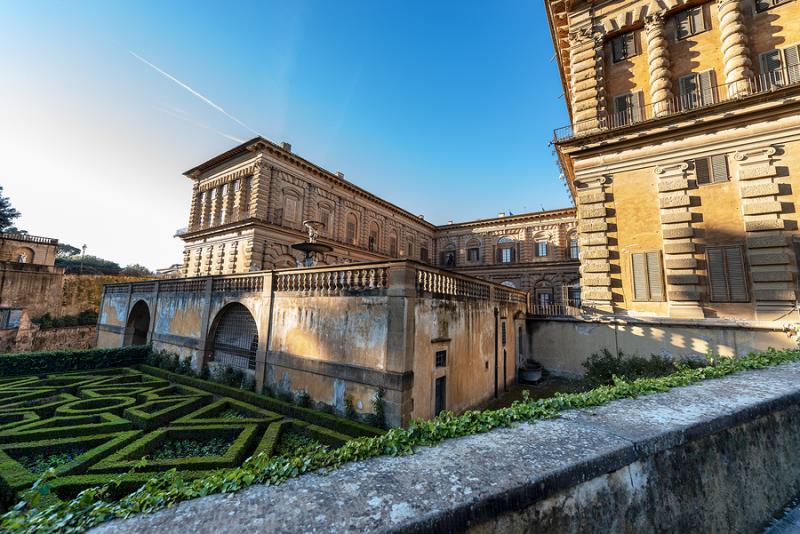For the first time, Palazzo Pitti in Florence, the former residence of the Medici family, becomes the setting of a video game.
A murder happens within its walls; a young art historian student must turn into detective to solve the mystery and get out of the palace. This is the plot of The Medici Game, to be released at the end of October, a game that intends to lure adults and children inside one of the most famous and sumptuous palaces in Florence, home in the past to three dynasties.
Conceived and produced by publishing house Sillabe in collaboration with Opera Laboratori Fiorentini - Civita and Gallerie degli Uffizi, the videogame is being developed by the cultural association TuoMuseo, which specializes in the ‘gamification’ of culture (the application of game-design elements and game principles in non-game contexts).
Designed for mobile phones and tablets, The Medici Game will be available for IOS and Android, in six languages (Italian, English, Spanish, Russian, Portuguese, Chinese and Japanese).
“One of the most beautiful and spectacular palaces in the world is about to become the setting of a video game centered on major themes of history and art,” said Eike Schmidt, the director of the Uffizi. “It's a creative undertaking meant to attract a younger audience and bring it closer to our museums and cultural heritage.”
Players take on the role of art historian/detective, and, thanks to the protagonist’s art history knowledge, they’ll be able to navigate a setting that includes such magnificent spaces as the Saturn Room with paintings by Raphael, the Prometheus Room, which houses the palace’s oldest paintings, and even the Boboli Gardens with the Grotta del Buontalenti, accessing centuries-old secrets hidden within the walls of the palace.
The game will present detailed and faithful reconstructions of Palazzo Pitti’s spaces, thanks to the use of photographs and advanced digital graphic techniques. Caterina, the protagonist of the game, even has her Instagram account, caterina_florence92, updated with photos and images.
Purchased in 1550, Pitti Palace was chosen by Cosimo I de’ Medici and his wife Eleanor of Toledo as the new Grand Ducal residence, and it soon became the new symbol of the Medici’s power over Tuscany. Today the Palace is divided into four museums: the Treasury of the Grand Dukes on the ground floor, the Palatine Gallery and the Imperial and Royal Apartments on the first floor, the Modern Art Gallery and the Museum of Costume and Fashion on the second floor.









